The California drought has been all over the news recently, and for good reason. It’s a huge deal. But why? Whose fault is it?
Some say it’s consumers – we demand water-intensive avocados, so avocados are what we get. Some say it’s the growers, some say it’s the Californian government, and some simply blame it on climate change.
The facts can get confusing, which makes trying to solve the problem incredibly hard. So, to help you out I broke down the 11 main things you should definitely know about the California drought.
1. California has been in a drought for the past 4 years, which has only increased in severity.
This video from the US Drought Monitor shows the drought increasing from 2011 to 2014.
Currently, 40% of California is in the “exceptional drought” category. Last year, only 23% of California was. Yikes.
2. California produces 25% of America’s food.
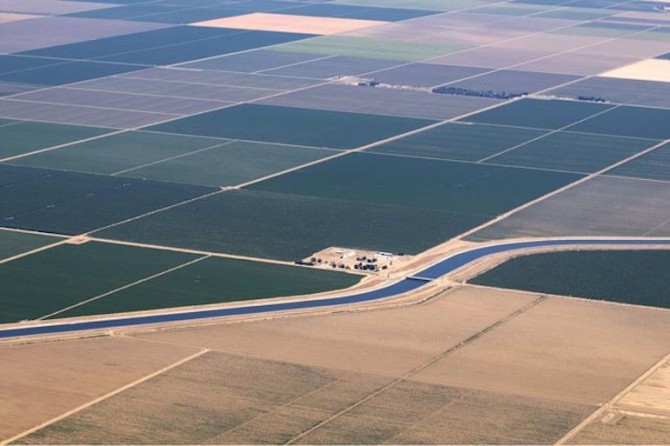
Photo courtesy of takepart.com
The Central Valley accounts for 1% of America’s farmland, but produces 25% of our food.
The fact that most of our produce comes from one state is pretty alarming. If there isn’t enough water to produce our crops, we’ll have to start relying on other countries or states to produce the crops, and they may or may not have the infrastructure to support such a large request.
Also, climate change is happening everywhere. Meaning, countries where we source our produce (like Mexico) are also facing drier weather.
3. Crops grown in California are thirsty, but it will be several years before we see the impacts of the drought on food prices.
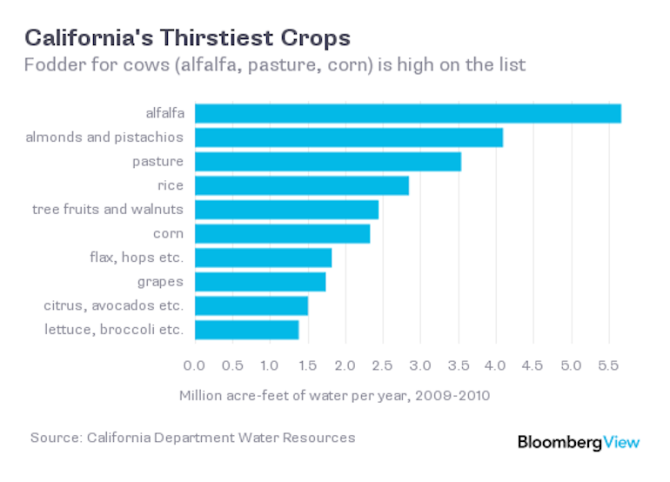
Photo courtesy of bloombergview.com
To put it in perspective: it takes 1 gallon of water to produce a single almond. Yeah, that’s a lot of water for one tiny nut.
As the amount of water available to grow that single nut decreases, farmers will most likely decrease the amount of almonds they grow. But if demand remains the same, prices for these crops will definitely increase.
But why aren’t we seeing inflation in food products yet? Well, even though Cali has been in a drought for the past 4 years, it hasn’t been bad enough for farmers to drastically alter how they grow crops. This inflation will occur some time after farmers begin changing how they farm and what they farm.
So enjoy these prices while they last, kids.
4. Agriculture accounts for about 80% of California’s human water usage.
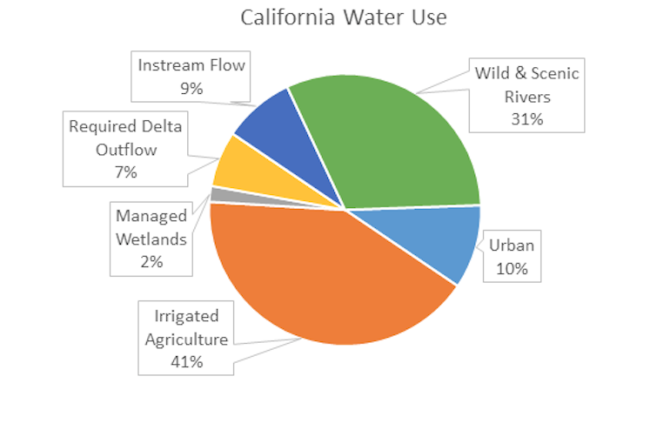
Photo courtesy of grist.org
This popular statistic that California uses 80% of the entire state’s water isn’t exactly true. The Public Policy Institute of California broke it down and determined that the environment uses 50% of CA’s water, 40% goes towards agricultural use, and 10% is used by urban areas.
Environmental usage includes rivers, habitats within streams, wetlands and water used to maintain the water quality for agricultural and urban usage.
Urban areas use a majority of their water for landscaping. I guess green lawns are important?
But farming takes the cake when it comes to the way humans use water in CA. Agriculture uses so much water because a lot of California farms are irrigated, with roughly 1,200 miles of irrigation canals in the state.
Then we also have to take into consideration other water uses, like fracking. Fracking, or hydraulic fracturing, consumes about 70 million gallons of California’s water every year, according to a Reuters article. To make that number tangible, that’s the amount of water San Francisco uses in two days.
That may not seem like a lot, but when we think about the oil industry as a whole, which used 42 billion gallons of water in 2014, that’s enough to power SF for three years. I mean, what would you rather have at the end of the day: food or gas?
5. Farmers aren’t necessarily to blame for the drought.

Photo courtesy of laweekly.com
Farmers aren’t planting avocados to be fashionable, they’re planting them because the world demands them, and they get bang for their buck when they do. Simply put, they’re just trying to make a living by growing high value crops.
Also, telling farmers to change what they plant isn’t a viable option. The way California has been developed from state and federal policies and food demand has created infrastructure to support this kind of water usage.
Simply telling them to grow stone fruit instead of thirsty crops won’t change the 1,200 miles of irrigation canals from flowing. Plus, many crops that don’t use as much water can’t handle the heat either. Ya dig?
6. Changing what we eat won’t solve the problem.
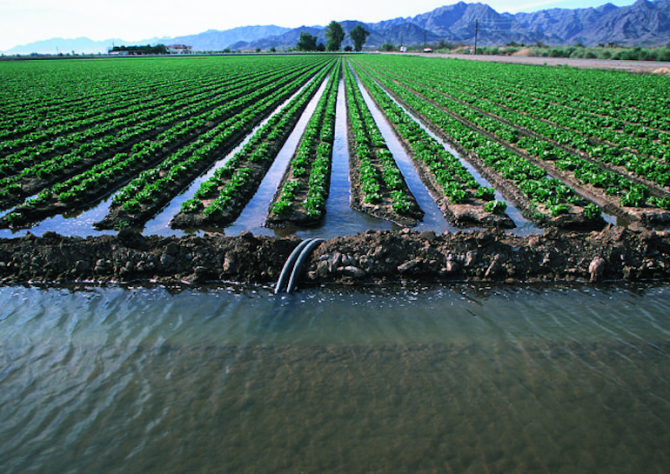
Photo courtesy of grist.org
Although the NY Times came out with a way to comprehend the scale of the drought to the everyday consumer, it implied that boycotting foods that require a lot of water would help solve the problem.
As we’ve already seen, California is set up to produce water-intensive crops. So we can’t just change the infrastructure of California overnight – we have to really think about how to use less water more efficiently.
7. Snow melt is an incredibly important source of water for farmers.
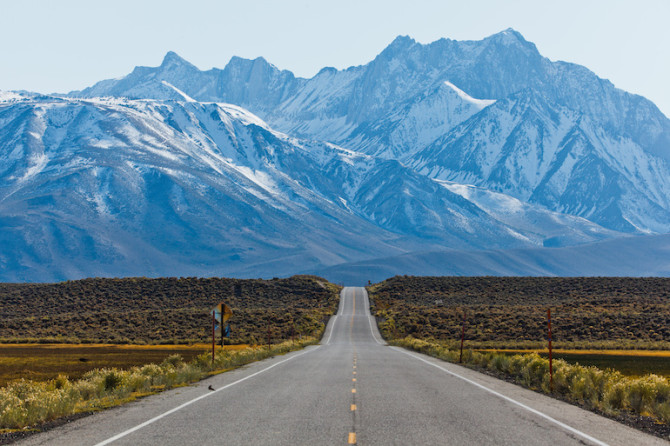
Photo courtesy of wikipedia.org
Many farmers depend on the snow in the Sierra Nevada Mountains as a water source for their crops. On average, a third of the water California uses comes from snow melt each year. So it’s pretty important that it snows in the mountains.
However, during the 2012-13 winter, 83% of California’s snowfall was below normal, making it a record low for the state. This is also the fourth consecutive year that California’s snowpack has been below average.
Also discomforting: it’s projected that by 2090, 90% of mountain snow will be lost due to rising temperatures from climate change. This means that there will be less drinking water, loss of wildlife due to degraded habitats, and more wildfires. Ouch.
8. Rain also isn’t enough to solve the problem.
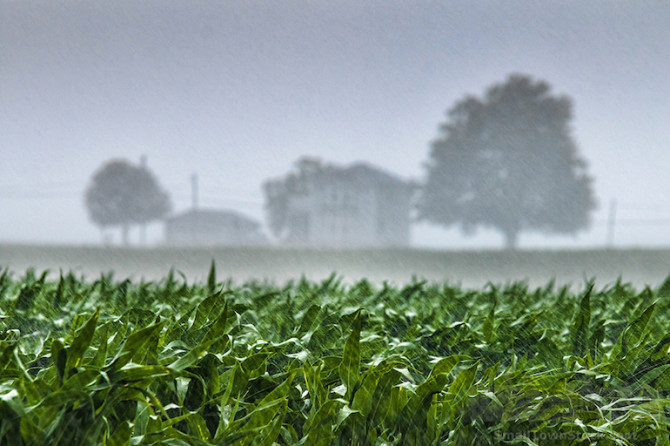
Photo courtesy of smalltownstock.photoshelter.com
Since there’s been a lack of rainfall and snowpack for the past few years, farmers have become dependent on groundwater. It’s not like farmers never used groundwater prior to the drought; they did, but with the mentality that it would get replenished from rain and melting snow.
Well, now that rain isn’t really happening and above-ground reservoirs are also being depleted, wells that tap into water that fell 20,000 years ago are beginning to pop up more frequently. Before the drought, groundwater provided 40% of California’s freshwater. Now, it’s around 65%.
If you recall from your elementary school days, you probably remember that the water cycle usually deposits water back into the ground when it rains. But if we’re taking out more than the Earth can naturally replenish, well… you do the math.
9. Cities will have enough water… for now.
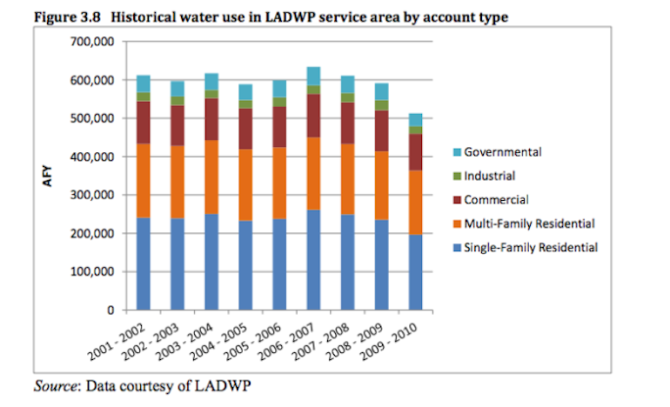
Photo courtesy of LADWP
Alright California city people, calm yo self. Droughts suck, and yes Gov. Jerry Brown mandated that urban areas have to reduce water usage by 25%, but that doesn’t mean you will run out of water. Deep breaths.
But, I hate to break it to you: cities do currently use more water than they need to (here’s lookin’ at you, suburban sprinkler systems). But, as you can see in the chart above, although more people are moving to LA, water usage has been declining since 1980.
But that doesn’t mean you should go take a 30 minute shower tonight.
10. Using ocean water is not a viable solution.
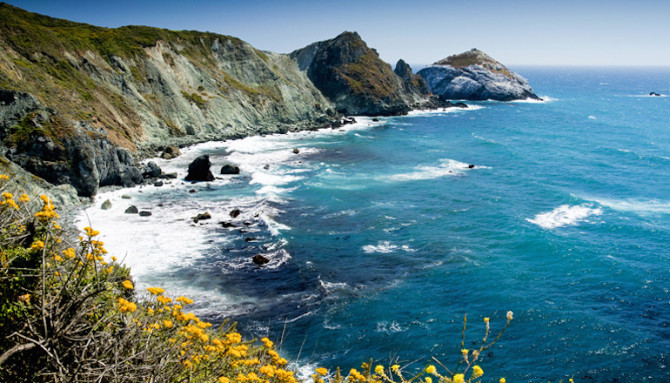
Photo courtesy of backroads.com
Desalinization, the process of removing the salt from salty water, isn’t exactly cheap. Also, it uses a ton of energy, so most people would rather not tap into the oceans for water.
For reference, the Carlsbad desalinization plant located outside of San Diego is planned to be completed in 2016. Although it’s estimated that 50 million gallons of drinking water will be provided to the city, the downside is that it will cost taxpayers $1 billion and will only provide 7% of America’s water needs.
Not to mention we’re screwing with a part of our planet we don’t even fully understand yet.
Worth it? Meh.
11. But here are some viable solutions:
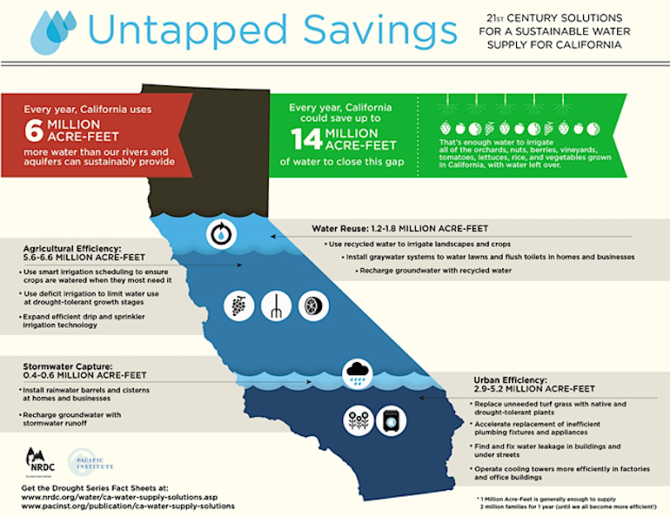
Photo courtesy of motherjones.com
Efficiency is key when it comes to solving California’s water woes.
To start off, urban water use can be reduced 40 to 60% if homeowners used more efficient showerheads and toilets and grew less water-intensive plants on their lawns.
Regarding agriculture, California could reduce its water usage from 17 to 22% by scheduling when to irrigate plants and increasing drip/sprinkler irrigation systems. Doesn’t sound too bad, right?
But now the question is, where do we begin?

